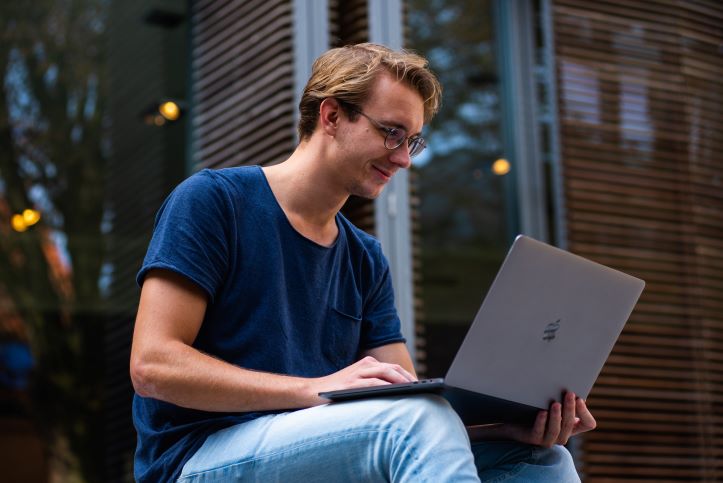If you are looking for a simple life then you should know what is a minimalist lifestyle. Welcome to the fascinating world of minimalism, where less truly becomes more.
At its core, a minimalist lifestyle is all about decluttering and simplifying, both physically and mentally. It is a conscious choice to embrace a life of purposeful simplicity, where possessions are intentionally curated, and focus is shifted towards what truly brings joy and meaning. By letting go of excess, minimalism invites us to reassess our values, priorities, and relationships with our belongings.
The benefits of adopting a minimalist lifestyle are plentiful. Not only does it offer a sense of liberation from the burden of material possessions, but it also cultivates a deep sense of clarity and calm. By creating an uncluttered physical environment, we create space for mental clarity and enhanced well-being. Moreover, minimalism allows us to break free from the relentless cycle of consumerism, promoting mindful consumption and sustainable living.
In embracing minimalism, we unlock the freedom to live authentically, focusing on experiences, relationships, personal growth, and the pursuit of what truly matters. So, if you’re ready to embark on this transformative journey of intentional living, prepare to simplify your life, rediscover what brings you joy, and experience the profound positive impact that a minimalist lifestyle can have on your well-being and overall happiness.
The Essence of Minimalism
Decluttering for Clarity
Assessing possessions: Evaluating our belongings and determining what truly adds value to our lives.
Letting go of excess: Releasing items that no longer serve a purpose or bring us joy.
Creating a visually appealing space: Curating our environment to be clean, organized, and visually pleasing.
Fostering a clear and focused mind: Removing physical clutter to promote mental clarity and reduce distractions.
Intentionality and Mindfulness
Aligning actions with values: Reflecting on our values and ensuring our choices align with them.
Cultivating mindfulness: Practicing awareness and being present in our daily lives.
Making deliberate decisions: Intentionally choosing what we bring into our lives and what we prioritize.
Developing gratitude: Appreciating and finding contentment in what we already have.
Examples of Minimalist Practices
Owning fewer possessions
- Curating a capsule wardrobe with versatile and essential clothing items.
- Embracing a “one in, one out” policy when acquiring new items.
- Streamlining personal belongings to include only what we truly need and cherish.
Simplifying daily routines
- Establishing a simplified meal planning system.
- Creating efficient and organized living spaces through minimalistic design principles.
- Adopting digital minimalism by reducing screen time and decluttering digital files.
Embracing minimalist hobbies and activities
- Engaging in experiences over material possessions, such as travel, nature walks, or pursuing creative endeavors.
- Prioritizing quality time with loved ones, building meaningful connections and memories.
- Finding joy in simple pleasures, like reading, meditation, or practicing mindfulness.
Streamlining Digital Life is a Big Part While Learning What is a Minimalist Lifestyle
In today’s digital age, streamlining our online presence and minimizing digital clutter has become increasingly important. Let’s delve into the significance of reducing digital distractions and explore practical steps to achieve a more organized and mindful digital life.
Minimizing Digital Distractions and Clutter
In a world filled with constant notifications and endless online content, it’s crucial to be mindful of the digital distractions that can hinder our focus and well-being. Consider the following:
Prioritize essential apps: Evaluate the apps on your devices and uninstall those that don’t serve a purpose or contribute positively to your life.
Customize notifications: Take control of your device notifications by disabling or limiting them to the most important and relevant ones.
Create designated digital-free zones or times: Designate specific areas or periods where you intentionally disconnect from devices and focus on offline activities.

Organizing Digital Files and Reducing Online Presence
Digital clutter can be just as overwhelming as physical clutter. Take steps to organize your digital files and reduce your online presence:
Organize digital files: Create a system for organizing your digital documents, photos, and other files. Use clear and logical folder structures to make it easier to find what you need.
Regularly delete or archive: Regularly review and delete unnecessary files, emails, and messages. Consider archiving important but rarely accessed files to keep your active digital space tidy.
Review subscriptions and accounts: Evaluate the online services, newsletters, and subscriptions you’re signed up for. Unsubscribe from those you no longer find value in, reducing digital noise and information overload.
Utilizing Cloud Storage Solutions and Digital Decluttering Apps
Cloud storage solutions and digital decluttering apps can be invaluable tools for streamlining and organizing your digital life:
Cloud storage: Utilize cloud-based services like Dropbox, Google Drive, or iCloud to store and access your files from multiple devices while reducing the storage burden on your local devices.
Digital decluttering apps: Explore digital decluttering apps like Evernote, Trello, or Notion to help you organize and manage your tasks, notes, and digital resources efficiently.
Mindfulness in Digital Consumption and Setting Boundaries
Practicing mindfulness and setting boundaries for your digital consumption is key to maintaining a healthy balance:
Practice digital detox: Take regular breaks from screens and engage in offline activities that bring you joy, such as hobbies, exercise, or spending time in nature.
Set screen time limits: Utilize screen time management tools on your devices to set daily limits for specific apps or overall screen time.
Establish tech-free times: Designate certain times of the day, such as mealtime or before bed, as tech-free zones to promote healthier habits and enhance real-life connections.
Cultivating Minimalist Habits
Minimalism extends beyond the realm of physical possessions. It is a mindset and a way of life that can be applied to various aspects of our lives, including time management, relationships, and self-care. In this section, we will delve into the importance of adopting minimalist habits and provide practical suggestions for incorporating minimalism into our daily routines and decision-making processes.
Beyond Physical Possessions
Minimalism encourages us to evaluate and simplify all areas of our lives, not just our material possessions. Consider the following aspects where minimalist habits can be beneficial:
Time management: Prioritize essential tasks and commitments, focusing on what aligns with your values and goals. Say no to non-essential activities to create space for what truly matters.
Relationships: Cultivate meaningful connections by investing time and energy in a select few relationships that bring you joy and fulfillment. Let go of toxic or draining relationships that no longer serve you.
Self-care: Streamline your self-care routines by focusing on activities that truly nourish and recharge you. Simplify your beauty and grooming routines by using fewer products with high quality and purposeful ingredients.

Applying Minimalism to Daily Routines
Incorporate minimalist principles into your daily routines to promote simplicity and intentionality:
Morning routine: Start your day with a mindful and clutter-free morning routine. Limit distractions, prioritize activities that bring you joy and set a positive tone for the day.
Digital detox: Allocate specific times or days for a digital detox, where you disconnect from screens and engage in offline activities that rejuvenate and inspire you.
Meal planning: Simplify your meal planning process by focusing on nutritious and wholesome ingredients. Avoid overcomplicated recipes and embrace simplicity in your meals.
Minimalism in Decision-Making
Adopt a minimalist approach to decision-making to avoid overwhelm and make choices aligned with your values:
Identify your priorities: Clarify your values and long-term goals to guide your decision-making process. Ensure that the choices you make align with these priorities.
Embrace intentional consumption: Practice mindful consumerism by considering the environmental impact, longevity, and necessity of items before making a purchase. Opt for quality over quantity.
Let go of “just in case” items: Challenge the tendency to hold onto items “just in case” they might be useful in the future. Be realistic about what you truly need and let go of excess.
Embracing Minimalist Mindset
Embracing a minimalist lifestyle goes beyond decluttering physical possessions; it requires a fundamental mindset shift. In this section, we will explore the mindset required to fully embrace minimalism, highlighting the value of gratitude, contentment, and conscious consumerism. We will also share personal anecdotes and inspiring stories of individuals who have embraced minimalism and reaped its benefits.
Mindset Shift
To fully embrace minimalism, a shift in mindset is crucial. It involves challenging societal norms that equate material possessions with success and recognizing that true abundance lies in experiences, relationships, and personal growth. The key elements of a minimalist mindset include:
Letting go of attachment: Releasing emotional attachments to material possessions and recognizing that true value comes from within rather than external objects.
Cultivating gratitude: Fostering a sense of appreciation for what we already have, shifting our focus from what we lack to the abundance in our lives.
Embracing contentment: Finding satisfaction and joy in simplicity and being content with having “enough” rather than constantly seeking more.
Seeking experiences over possessions: Prioritizing experiences, creating memories, and valuing personal growth over accumulating material possessions.
Value of Gratitude, Contentment, and Conscious Consumerism
Adopting a minimalist mindset brings forth the recognition of the value of gratitude, contentment, and conscious consumerism:
Gratitude: Practicing gratitude cultivates a sense of appreciation for the present moment and the blessings in our lives. It shifts our focus from material possessions to the intangible aspects that truly matter.
Contentment: Embracing contentment allows us to find joy and satisfaction in what we already have, reducing the constant desire for more and freeing ourselves from the cycle of consumerism.
Conscious consumerism: Minimalism encourages mindful and intentional consumption. It involves making informed choices that align with our values, considering the environmental impact, and supporting ethical and sustainable practices.
Inspiring Stories
Personal anecdotes and inspiring stories can motivate and illustrate the transformative power of embracing minimalism. Here are some examples:
Sarah, a working professional, simplified her life by decluttering her physical space, letting go of non-essential commitments, and embracing a minimalist mindset. As a result, she found more time for self-care, deepened her relationships, and discovered a newfound sense of contentment and fulfillment.
John and Emma, a couple with a passion for travel, decided to downsize their possessions and adopt a minimalist lifestyle. By reducing their material possessions, they were able to save money, work remotely, and embark on a nomadic journey around the world, embracing new cultures and experiences.
Michelle, a conscious consumer, shifted her shopping habits from fast fashion to ethical and sustainable clothing brands. Through mindful purchasing decisions, she not only reduced her environmental impact but also supported businesses aligned with her values, resulting in a more meaningful and fulfilling wardrobe.
These stories serve as inspiration and demonstrate that embracing minimalism can lead to transformative changes, increased fulfillment, and a deeper connection with what truly matters in life.
5 Misconceptions of a Minimalist Lifestyle
In a world where consumerism and materialism are often glorified, the concept of minimalism can be misunderstood or even met with skepticism. In this section, we will address some common misconceptions surrounding a minimalist lifestyle and shed light on the truth behind them.
Minimalism means living with nothing
One of the most common misconceptions is that minimalism requires living with the bare minimum or having an empty space. In reality, minimalism is about intentionally curating and keeping only the possessions that add value and joy to your life. It’s not about deprivation or having nothing, but rather about focusing on quality over quantity and being mindful of what truly matters.
Minimalism is only for people who can afford luxury
Another misconception is that minimalism is only attainable for those who can afford high-end or luxury items. In truth, minimalism is accessible to people of all income levels. It’s about prioritizing and being intentional with your spending, regardless of your budget. Minimalism encourages conscious consumption, making thoughtful choices based on personal values rather than external pressures.
Minimalism is a rigid and restrictive lifestyle
Some people believe that embracing minimalism means adhering to strict rules and rigid routines. However, minimalism is a flexible and adaptable lifestyle that can be tailored to suit individual preferences and circumstances. It’s about finding your own version of minimalism that aligns with your values and brings you joy. There is no one-size-fits-all approach, and it allows room for personal interpretation and creativity.
Minimalism is only about physical possessions
While decluttering physical possessions is an essential aspect of minimalism, it’s not the sole focus. Minimalism extends beyond material belongings and encompasses other areas of life, such as time management, relationships, and personal well-being. It’s about simplifying and aligning all aspects of life with your values, bringing more intentionality and fulfillment.
Minimalism is a joyless and austere lifestyle
Many assume that minimalism means sacrificing enjoyment and living a dull, joyless life. On the contrary, minimalism encourages us to focus on what truly brings us joy and fulfillment. By removing excess and distractions, we create space for what truly matters, allowing us to experience deeper appreciation, contentment, and a greater sense of freedom.
It’s important to recognize that minimalism is a personal journey, and everyone’s interpretation may vary. It’s not about adhering to strict rules or conforming to a specific image. Instead, it’s about embracing the principles that resonate with you and applying them in a way that enhances your well-being and aligns with your unique circumstances.
10 Reasons Why is Minimalism So Popular?
- Escape from materialistic culture: Minimalism provides an alternative to the constant pursuit of material possessions and offers freedom from the pressures of consumerism.
- Simplify and declutter: Minimalism allows individuals to simplify their lives and declutter their physical and mental spaces, leading to a sense of calm and clarity.
- Focus on what truly matters: By letting go of excess, minimalism helps people prioritize experiences, relationships, personal growth, and the things that bring genuine joy and fulfillment.
- Environmental consciousness: Minimalism aligns with sustainability, encouraging conscious consumption and reducing waste, thereby appealing to those who are environmentally conscious.
- Rejecting societal expectations: Minimalism challenges societal norms that equate success with material wealth, offering a way to break free from the pressure to accumulate more.
- Stress reduction: By eliminating clutter and simplifying daily routines, minimalism reduces stress and creates a more peaceful living environment. Moreover, everybody must know how to live a stress-free life.
- Financial freedom: Minimalism promotes mindful spending and intentional consumption, leading to financial savings and the ability to prioritize experiences over material possessions.
- Emotional well-being: A minimalist lifestyle encourages letting go of attachments to possessions, allowing individuals to find contentment, gratitude, and emotional well-being.
- Increased productivity: With fewer distractions and a more organized environment, minimalism can enhance focus, productivity, and efficiency in daily life.
- Embracing mindfulness: Minimalism fosters mindfulness by promoting awareness and intentionality in decision-making, consumption, and daily habits.
Conclusion
We have explored the key concepts to the answer of what is a minimalist lifestyle. By embracing minimalism, individuals can experience a profound shift in their lives. Through decluttering, embracing intentionality, and simplifying various aspects of life, they can create a space for clarity, focus, and fulfillment.
We encourage readers to take small steps towards embracing minimalism, recognizing that it is a personal journey. Embracing a minimalist lifestyle offers transformative potential, allowing individuals to prioritize what truly matters, cultivate gratitude, and find contentment. The rewards of living with less include increased freedom, reduced stress, enhanced well-being, and a deeper connection with what truly brings joy and fulfillment. So, take that first step and embark on your own minimalist journey today.








